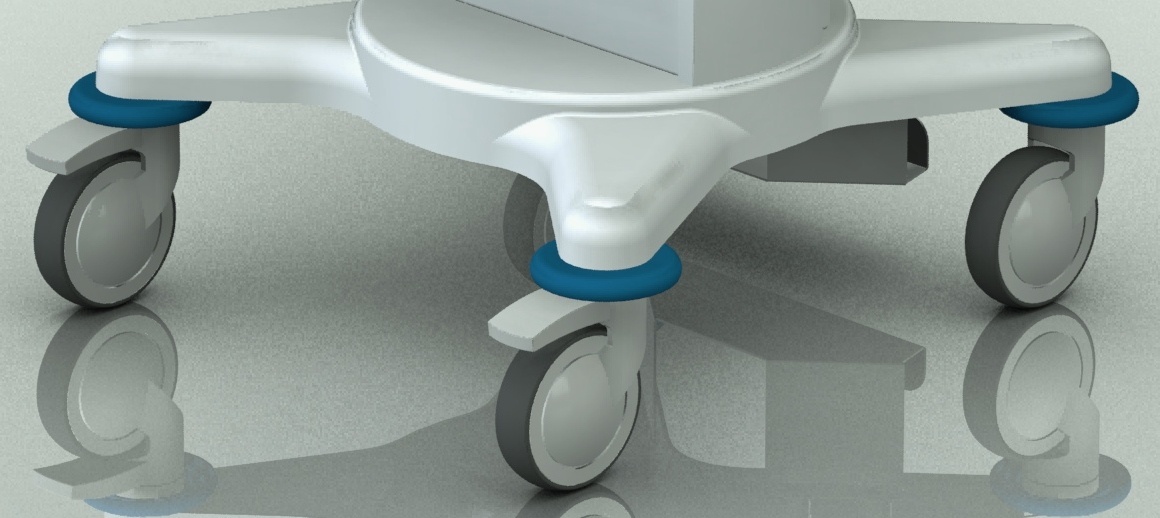Historically, there hasn’t been much debate over the ideal locking caster candidate for a medical cart. A common solution included two wheels that locked and two that did not. However, the additional tests in the IEC 60601-1 3rd edition have given medical cart designers and manufacturers reason to reconsider and redevelop how to choose the best casters and wheels for their medical cart projects.
IEC 60601 Testing Requirements
The additional tests in the IEC 60601-1 3rd edition require a medical cart with braking mechanisms to sit on a hard, flat surface at a horizontal incline of five or ten degrees— the difference depends on whether you’re testing in transport position or excluding transport position. Medical carts with casters must undergo this test in the worst-case position for that product. If they don’t slide or move more than 50mm, they pass the test.
Are Two Locking Casters Sufficient?
Medical carts with only two locking casters risk test failure because the locking wheels would be placed upward of the incline, and the cart would likely slide. Product weight will greatly affect the outcome, however.
Most medical carts are meant for maneuverability and need to be designed for the range of positions in which they may be placed. In order to address this, many designers have been favoring four locking casters, but there are other options. Hypothetically, having two locking casters positioned diagonally from each other, or incorporating three locking casters ensures both ends of the medical cart have a braking force.
To learn the finer details of the test, look under 60601-1 3rd edition section 9.4.3—Instability from unwanted lateral movement (including sliding). If you have questions about your product and 60601 testing requirements, please contact us! We’ll be happy to help.


